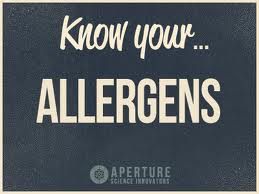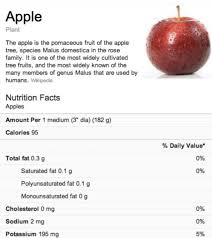Food Information on Allergens: no escape!
Posted: September 17, 2013 Filed under: Food, Information | Tags: allergen, allergens, food, information, labeling Leave a comment » Your company wants to provide bullet proof information on the food products it offers for sale in view of the upcoming changes in food legislation? This post may be helpful to you, as it highlights the issue of allergens and substances causing intolerances addressed by Regulation 1169/2011 on the provision of food information to consumers (“the Regulation”). You may recall that the rules laid down in the Regulation apply to food business operators at all stages in the food chain, where their activities concern the provision of food information to consumers. The new rules will in principle enter info force on 13 December 2014. However, in order to avoid time constraints by the end of 2014, a large number companies aim acting in compliance as soon as possible. What should be taken into account?
Your company wants to provide bullet proof information on the food products it offers for sale in view of the upcoming changes in food legislation? This post may be helpful to you, as it highlights the issue of allergens and substances causing intolerances addressed by Regulation 1169/2011 on the provision of food information to consumers (“the Regulation”). You may recall that the rules laid down in the Regulation apply to food business operators at all stages in the food chain, where their activities concern the provision of food information to consumers. The new rules will in principle enter info force on 13 December 2014. However, in order to avoid time constraints by the end of 2014, a large number companies aim acting in compliance as soon as possible. What should be taken into account?
The issue of allergergies/intolerances
As allergies and/or intolerances seem to occur more frequently nowadays, the Regulation aims to ensure that full information is provided to allow the consumer to make an informed choice. The EU here clearly follows the example of the US, where FDA requirements on labeling allergens information already is in place. The Regulation stipulates to this respect that any ingredient or processing aid causing allergies or intolerances used in the manufacture or preparation of the food and still present in the finished product shall be indicated in the list of ingredients.
How to list allergens/substances causing intolerances?
This should be done in descending order or weight, as recorded at the time of their use in the manufacture of the food, where the allergens should be emphasised by using a typeset that clearly distinguishes it from the rest of the ingredients, by means of font, style or background colour. If the product does not contain a list of ingredients, then it should mention as a minimum: ”contains….” followed by the allergens. For the time being, 14 types of allergens have been distinguished, but the Commission is at liberty to extend the current list on the basis of a delegated act.
Allergens obligations also for non-prepacked food
Whereas EU food legislation used to apply only to prepacked food, it is striking to note that the obligation to provide information on allergens/substances causing intolerances also applies to non-prepacked food. More precisely, such obligation exists for foods that are offered for sale to the final consumer or to mass caterers without prepackaging, or where foods are packed on the sales premises at the consumer’s request or prepacked for direct sale. So do not be surprised to find a warning at the cheese corner of your Albert Heyn grocery stating that the products sold contain lactose, beind one of the allergens defined under the Regulation.
Stricter national requirements/means of providing information
More particulars, such as the quantity of the allergens or its country of origin, may need to be mentioned too, but only if such has been declared mandatory under national law. The sensitive area of allergens allows Member States to formulate stricter requirements as well (albeit within the Regulation’s framework). However, they are also at liberty to adopt national measures concerning the means through which the information on allergens are to be made available.
How to handle non prepacked food requirements?
It can only be hoped for the Member States adopting national measures on the means of providing information in this area, adopt a practical approach. Although providing information “upon request” is not to be considered as a “means of providing information”, national measures may stipulate that detailed allergen/intolerance information may be given upon request of a consumer. However, such information should be provided in a conspicuous place and in such a way that it is easily visible and clearly legible. This is a practice that restaurants and cafes will need to get used to.
Conclusions
Allergies and substances causing intolerances are in the centre of interest. Many companies whom previously did not have to deal with information on allergies will find that the Regulation also applies to their business. In addition to getting acquinted with and stay posted on the EU allergens requirements, it is important to keep an eye on national legislation in this area. Member States are at liberty to formulate stricter national requirements here. Therefore, despite the aim of harmonization that the Regulation aims to achieve, obtaining local advice for the launch of a new product continues to be a sound plan. Also, stay tune to FoodHealthLegal, as we will provide you with information on requirements for the name of your product and other labeling requirements shortly.
Food information all over the place
Posted: August 14, 2013 Filed under: Food, Information, Nutrition claims Leave a comment » Food information services by Google
Food information services by Google
Recently, Google added nutritional information into its search functionality relating to more than 1,000 food items ranking from fruits to vegetables and from meats to complete meals. The new functionality is a part of Google’s Knowledge Graph that was launched in May 2012 in the US. Knowledge Graph is a database interconnecting various search results in order to enhance understanding. By offering information in this way, Google aims developing its information engine into a knowledge engine. As to food information, Google wants to help its users to make healthier choices – so it says. For examples how Google’s food information service will be operated, reference is made to its blogspot.
Food information in the EU
In the European Union, food information is considered to be of the essence as well. To that end, rules on food information were revamped under Regulation 1169/2011 (“the Regulation”) on the provision of food information to consumers . This Regulation will enter into force on 13 December 2014 and will bring about a great number of changes in the food information landscape in Europe. On the one hand, the Regulation aims to ensure a high level of protection of consumers’ health and interests by enabling them in making informed choices. On the other hand, the Regulation aims to realise free movement of legally produced and marketed food. But how is this going to be achieved?
Fair information practices
Firstly, food information shall not be misleading (a) as to the characteristics of the food, (b) by attributing to the food effects or properties it does not possess, (c) by suggesting that the food possesses special characteristics when in fact all similar food possess such characteristics, (d) by suggesting the presence of a particular food or an ingredient, while in fact substitution with another food or ingredient occurred. It should be stressed that food information comprises all information about a food made available to a final consumer. So not only product labels, but also information published on company website, leaflets, advertisements etc.
Specific guidelines for mandatory information
Secondly, the Food Information Regulation provides specific guidelines for mandatory food information, such as the name of the food, the list of ingredients etc. These guidelines relate for instance to the legibility of this information, requiring a minimum font size of 1,2 mm for the x-height, defined in Annex IV to the Regulation. They also relate to the place where mandatory information is shown, requiring that such information appears directly on the package or on a label attached thereto, so not on a separate leaflet. In cases of distance selling, most of the mandatory information should be available before the purchase is concluded. i.e. it should clearly appear on the website where the food at stake is offered for sale. Furthermore, these guidelines cover language requirements, stipulating that mandatory information shall appear in a language easily understood by the consumers of the Member States where a food is marketed. For the Netherlands, this would clearly be Dutch, but the Member States also have the authority to stipulate that the particulars shall be given in one or more languages of the official languages of the European Union. Such language could be used as an alternative but also in addition to the national language.
Nutrition declarations
Thirdly, nutrition declarations have become mandatory under the Regulation. Such declarations shall imperatively include the following seven elements contained in the food product: (1) energy value, (2) amounts of fat, (3) amounts of saturates, (4) amounts of carbohydrates, (5) amount of sugar, (6) amount of proteins and (7) amounts of salt. Furthermore, they may be supplemented with another six elements such as starch and fibre. The nutrition declaration should come in the form of a table, if space permits, and may be placed on the side or on the back of a packaging (not necessarily at the front side). The information provided must be given per 100 mg or 100 ml – only in addition thereto, information per portion can be given, provided that the portion is quantified. In order to indicate reference intakes of food ingredients, quite often the term GDA (Guideline Daily Amount) is used. This is not a requirement under the Regulation, but if used, this should be done in a way consistent with the Regulation. For vitamins and minerals, it is mandatory however to use the term RDA (Recommended Daily Amount).
Conclusion
The Food Information Regulation brings about such important modifications for food information, that it is very likely that the packaging of most of the products marketed in Europe needs to be adjusted. The nutrition declarations that Google intends to publish for various foods are just one element of those modifications. It is thereby ironic that in an attempt to harmonize the rules on food information, the Food Information Regulation in the same time creates barriers to EU-wide trade, by means of the language requirements for food information. Furthermore, even if the Regulation regulates food information in great detail (e.g. font prescribed font size), it is questionable whether that framework will work for B2B transactions or in cases where the food is not sold to final consumers (e.g. mass caterers). This is certainly food for further thought. Stay tuned to FoodHealthLegal!
